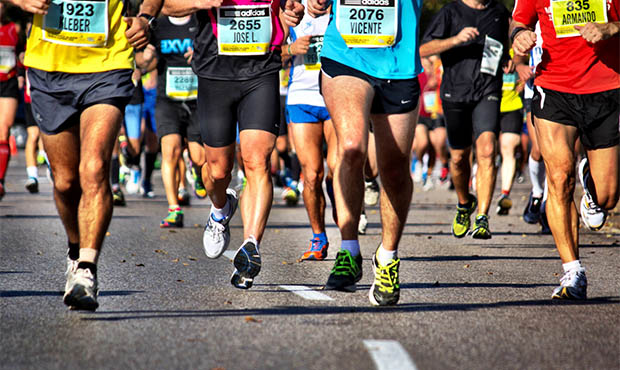
Finishing a half marathon in less than two hours is a common goal for many runners. And the benchmark is completely attainable if you work hard and follow the right training plan.
Running 13.1 miles under 1:59:59 means maintaining a 9:09 average pace per mile. For many, this isn't a jaunt or a jog—this is a race.
So how do you get there?
Are You Ready?
To run a sub-two hour half marathon, you need to have a solid training base. In most cases, you also need the experience of having already completed a 13.1-mile race.
Endurance runners tend to get better (read: faster) as they complete more events. Since pacing is so important, experience helps in being able to "feel" the right pace without too much deviation.
A good gauge of whether you're ready to go after the sub-two is by using an online race predictor calculator. A pace calculator will give you a general idea of how far away you are from your goal—and how much work you'll need to do to get there. That being said, never count out the human factor of being mentally tough and prepared come race day.
In terms of mileage, a solid training base should be attained before you take on a sub-two half marathon training plan. A good base of 20 to 25 miles per week will set you up to dive headfirst into your training plan.
Train Right
Speaking of a training plan—you'll need one.
A typical week should include two easy runs, one long run, one tempo run or speed session, and a day of either cross-training or strength training. By doing the same routine over and over, you're training your body to get accustomed to the workout, which doesn't make you faster. While you may build endurance this way, you'll need to add speed workouts and tempo runs increase your pace.
One of the keys to running faster is just that: actually running faster. Fartleks are a great way to get in some key speed workouts. A fartlek—a Swedish word meaning "speed play"—is a type of training run where you increase and decrease speed during various periods of a run.
Pace runs and long runs will be your bread and butter. (Or toast and peanut butter, whatever you prefer.)
Pace runs allow your body to get a feel for your race pace. They will be tough at first, but don't worry—that's the point. Think of these runs as a dress rehearsal for a play. They may not be perfect, but that's why you have them: to work out the kinks.
The long run should be more relaxed and less focused on pace. Not every plan will call for you to reach the full 13.1 during training, but some runners do opt to run even longer than that before race day. It's important to note that if you run longer than the race distance, you must take that run easy and give yourself enough time to recover before your race.
Consistency in your training plan is paramount. Keep your sub-two hour goal in mind during each and every workout, and find running buddies with similar goals to help you along the way. Elite and professional runners show up to each training run not only because it's their job, but also because it's the only way to get better.
Race Day Approaches
When race day is finally upon you, be sure you've gotten plenty of rest the few nights before. It's also highly important that you're hydrated and have enough glycogen in your muscles to fuel you for 13.1 miles. Eat a good breakfast several hours prior to your race, and visualize hitting your goal.
Finally, race smart. It's easy to get caught up in the momentum at the start of a race, but remember that you're prepared and have trained hard.
Start your race relaxed and find your groove. Take it mile by mile. As you see the finish line, you'll know you've got that sub-two hour half marathon in the bag.
Related Articles:
- The Importance of Building a Running Base
- Long Runs: Not Just for Marathoners
- The 10 Commandments of Race Day for Runners
Connect with us on Twitter, Facebook, Instagram or Pinterest for more tips, recipes and ideas to fuel your ACTIVE life.
 Find your next race.
Find your next race.


